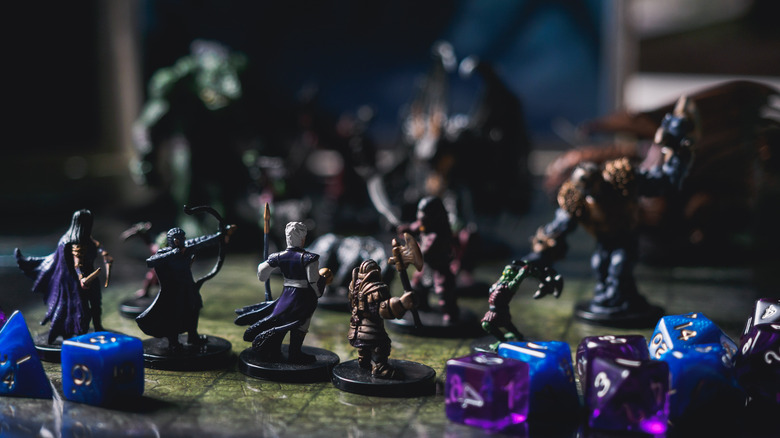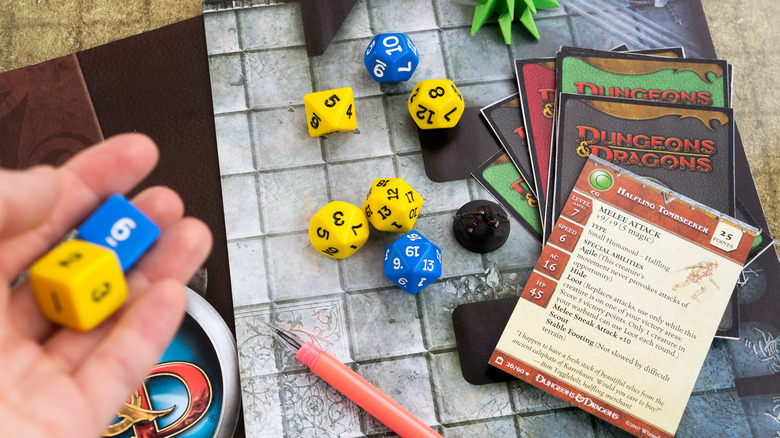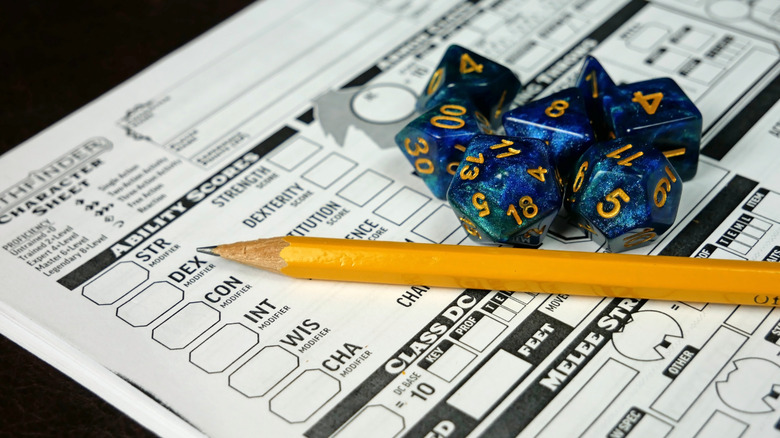Vecna's Unique D&D Symbol Has A Gross Meaning
For several years now, one of the most talked-about shows on Netflix has been "Stranger Things," the sci-fi series that at once terrifies the audience and tugs at the heartstrings and is also a veritable treasure trove of 1980s nostalgia. The music, the settings, the costuming — it's all one giant love letter to the decade.
One of the bits of '80s nostalgia that has informed quite a bit of the plot of "Stranger Things" has been Dungeons & Dragons, or D&D for short. The tabletop role-playing game (depicted above) actually became a thing in the 1970s, but it was in the '80s when it, along with heavy metal music, led to a moral panic that helped cement the game as an '80s thing (via Nerds on Earth).
In the first season, the teenagers of the fictitious Hawkins, Indiana teamed up to defeat a Demogorgon, a demon who has existed within the game for decades (via Dungeons & Dragons). And again in Season 4, another D&D villain, Vecna, entered the narrative. Before reading any further, note that the beginning and the end of "Stranger Things" Season 4 spoilers occurred in the sentence you just read; this article won't discuss what role he plays in the narrative, and will instead focus on the demon as he exists in D&D lore.
Vecna: From Wizard To Lich To God
Considering that not all of our readers will be familiar with Dungeons & Dragons and how it works, a bit of context might be in order.
D&D is based on campaigns — that is, stories whose structures are pre-written, but with much of the plot and action based on the decisions of the characters playing. There are dozens of them, and each one is contained in a book, which contains the general plot, maps, key data points for how encounters will work themselves out, and so on. It can all be a bit aracne for someone who isn't familiar with it (via Polygon).
Vecna first appeared in the campaign "World of Greyhawk," one of the very earliest D&D campaign books. In other words, Vecna can be considered one of the oldest D&D villains.
Over the decades, D&D would go through multiple revisions and updates, and as the game progressed, so did Vecna's lore. He started as a wizard, then became a lich (an undead being, kept alive through magic), then a god, and he effectively became one of the gods in the game's default, in-universe pantheon (via Tor.com).
Vecna's Symbol
In the lore of the fantasy genre, no self-respecting demon, god, demigod, or whatever else is going to do his thing without a symbol, and Vecna's is a bit gruesome.
As Critical Role notes, Vecna's symbol came about as a result of his character progression. Specifically, his symbol is an eye in a hand, not unlike the Hamsa Hand or the Hand of Fatima, only considerably more gruesome. Specifically, his hand is depicted as withered or deathly, his long and bony fingers extended, and in some iterations, the hand is gripping the eye.
The reason for Vecna's gruesome symbol? When he had physical form, he was done in by a traitor, and all that remained of him were his left hand and left eye. What happened next is long, complicated, and arcane, but long story short, he was resurrected (in a way) as a god, but even in his godly form, he was without his left hand or his left eye. Lacking them on his body, they became his gruesome and terrifying symbol.


